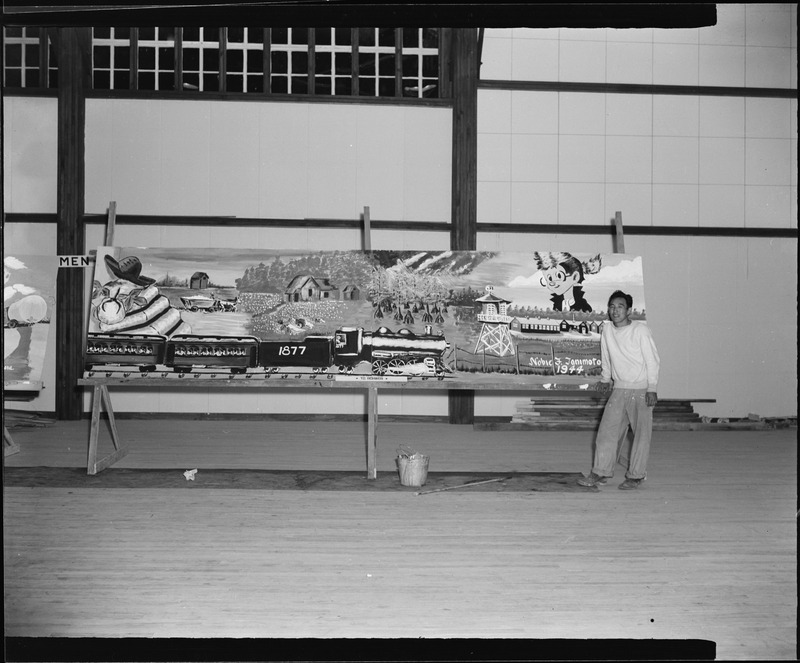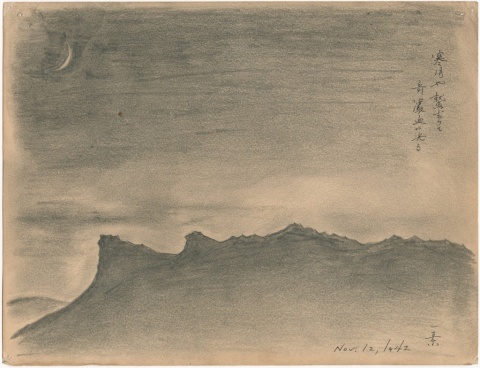Introduction
Above is the mural “To Rohwer”. To Rohwer was but one of the murals within the exhibition project heeded by Mabel Rose Jamison Vogel (1906–1994), an artist and art teacher who had been forced into the Rohwer relocation center in Arkansas. Both Vogel and her art students were interned when the inmate Public Works Division asked for art for the camp auditorium. Vogel thought this would be a good opportunity to allow the students an outlet to express themselves and their experiences when being forcefully removed from their homes and into Rohwer. To Rohwer was created by Nobi Tanimoto, in which he depicted traditional American motifs paired with landscapes and imagery that suggested negative emotions.
During World War II, there were many secret as well as acclaimed artists who were victims of Japanese internment camps. The art that was created within and inspired by Japanese internment are so significant in terms of looking at history in a more human oriented, three dimensional lens. The act of creating art was a beacon of light for victims during a very dark time and often took the form of either physical works or traditional drawings and paintings. Artists such as Isamu Noguchi (1904-1988) and Minè Okubo (1912-20o1) were famous, established artists who were victimized by internment camps and subsequently made art reflecting that fact. Countless other pieces were made by civilians who were either unknown as artists or were simply creating to process their reality.
Unfortunately, a more positive aspect of World War II that has been discussed much less frequently is the prevalence of art created within the internment camps that many Japanese Americans were forced into. The forced evacuation, relocation, and in turn harsh treatment of innocent citizens was understandably extremely traumatic and led to very serious mental strains. Oftentimes, to combat the terrible mental effects, victims looked to creative expression through art to get through their time in the camp or to provide a sense of stability.
The intention for this exhibit is to provide insight into the background of Japanese internment camps as well as to shed a light on the different artistic expressions that came from within them. I believe that the phenomenon seen here is a representation of an important aspect of the human condition; the multifaceted impacts that creativity may have on people, even when subjected to terrible circumstances. Furthermore, I seek to understand the inquiry of why we, as humans, place such an emphasis on remaining creative even in the most horrific of circumstances. In doing so, a more humanizing side of a culture that has greatly influenced our society may be taught.
This exhibit will explore these ideas and reach this intention through showcasing art pieces made by internment camp victims during their time within their respective camp, as well as pieces from the famous artist Isamu Noguchi (1904-1988) who also spent time within an internment camp. A separate section will be provided detailing any necessary background information on America’s implementation of the order that caused the internment camps to be constructed and utilized. The overarching narrative will be unwaveringly and unequivocally in favor and admiration of the art created by brave people while actively denouncing the system which caused them to be harmed. The main focus shall be placed on understanding how art may be used as a tool against mental decay for many people.


